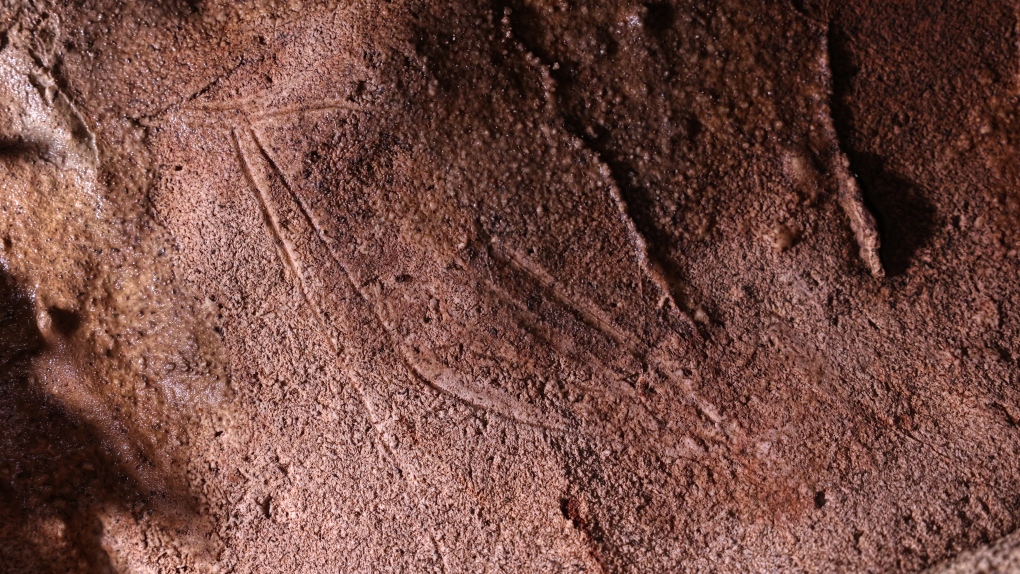
Engraved hind found in Cova Dones
(A. Ruiz-Redondo, V. Barciela)
Mitchell Consky
CTVNews.ca Writer
Published Sept. 8, 2023
A team of archeologists have recently published a scientific paper detailing the discovery of what they call “the most important Paleolithic sanctuary” ever found on the Eastern Iberian Coast.
Cova Dones, located in Millares, Spain, is a common tourist attraction, with records of exploration dating back to the 18th century. However, the Paleolithic paintings within the cave were only discovered in June 2021, when three archeology scholars analyzed markings and engravings on the ancient cave walls. Their findings were published in the British academic journal Antiquity this month.
Researchers deemed this particular cave art “unprecedented in the region” based on the uniqueness of the designs and the techniques in which they were created, Antiquity reports.
Part of the rarity of this discovery, the study explains, derives from the fact that the applied clay has had time to dry in a wet environment, amidst the presence of thick calcite layers which sprawl along the markings and engravings.
The study consists of a thorough analysis of cave markings in the historical context of European Paleolithic Art, confirming the representation of 19 animals (including hinds, horses, aurochs and a deer.)
Archeologists estimate that the ensemble of engravings and markings could have a minimum age of approximately 24,000 years.
With the research still in its early stages, the nearly 500-metre-long cave consists of additional ancient artwork to be assessed, the study concludes, with multidisciplinary investigations hoping to uncover more about anthropological art in the early stages of the Stone Age.
Mitchell Consky
CTVNews.ca Writer
Published Sept. 8, 2023
A team of archeologists have recently published a scientific paper detailing the discovery of what they call “the most important Paleolithic sanctuary” ever found on the Eastern Iberian Coast.
Cova Dones, located in Millares, Spain, is a common tourist attraction, with records of exploration dating back to the 18th century. However, the Paleolithic paintings within the cave were only discovered in June 2021, when three archeology scholars analyzed markings and engravings on the ancient cave walls. Their findings were published in the British academic journal Antiquity this month.
Researchers deemed this particular cave art “unprecedented in the region” based on the uniqueness of the designs and the techniques in which they were created, Antiquity reports.
Part of the rarity of this discovery, the study explains, derives from the fact that the applied clay has had time to dry in a wet environment, amidst the presence of thick calcite layers which sprawl along the markings and engravings.
The study consists of a thorough analysis of cave markings in the historical context of European Paleolithic Art, confirming the representation of 19 animals (including hinds, horses, aurochs and a deer.)
Archeologists estimate that the ensemble of engravings and markings could have a minimum age of approximately 24,000 years.
With the research still in its early stages, the nearly 500-metre-long cave consists of additional ancient artwork to be assessed, the study concludes, with multidisciplinary investigations hoping to uncover more about anthropological art in the early stages of the Stone Age.
No comments:
Post a Comment